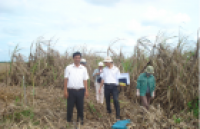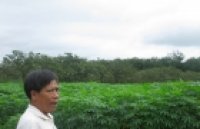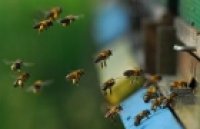| Snow mold of winter cereals: a complex disease and a challenge for resistance breeding |
|
Snow mold resistance in winter cereals is an important trait for many countries in the Northern Hemisphere. The disease is caused by at least four complexes of soilborne fungi and oomycetes of which Microdochium nivale and M. majus are among the most common pathogens. They have a broad host range covering all winter and spring cereals and can basically affect all plant growth stages and organs. Their attack leads to a low germination rate, and/or pre- and post-emergence death of seedlings after winter and, depending on largely unknown environmental conditions, also to foot rot, leaf blight, and head blight. |
|
Mira L. Ponomareva, Vladimir Yu. Gorshkov, Sergey N. Ponomarev, Viktor Korzun & Thomas Miedaner Theoretical and Applied Genetics February 2021, vol. 134: 419–433.
Key message
Snow mold resistance is a complex quantitative trait highly affected by environmental conditions during winter that must be addressed by resistance breeding.
Abstract
Snow mold resistance in winter cereals is an important trait for many countries in the Northern Hemisphere. The disease is caused by at least four complexes of soilborne fungi and oomycetes of which Microdochium nivale and M. majus are among the most common pathogens. They have a broad host range covering all winter and spring cereals and can basically affect all plant growth stages and organs. Their attack leads to a low germination rate, and/or pre- and post-emergence death of seedlings after winter and, depending on largely unknown environmental conditions, also to foot rot, leaf blight, and head blight. Resistance in winter wheat and triticale is governed by a multitude of quantitative trait loci (QTL) with mainly additive effects highly affected by genotype × environment interaction. Snow mold resistance interacts with winter hardiness in a complex way leading to a co-localization of resistance QTLs with QTLs/genes for freezing tolerance. In practical breeding, a multistep procedure is necessary with (1) freezing tolerance tests, (2) climate chamber tests for snow mold resistance, and (3) field tests in locations with and without regularly occurring snow cover. In the future, resistance sources should be genetically characterized also in rye by QTL mapping or genome-wide association studies. The development of genomic selection procedures should be prioritized in breeding research.
See: https://www.isaaa.org/kc/cropbiotechupdate/article/default.asp?ID=18567
Figure 1: Natural snow mold infection of winter rye in Tatarstan/Russia. a Yield plots of winter rye with a snow mold-resistant entry in the middle (April 2018); b the susceptible winter rye varieties in conditions of severe snow mold infection (May 2019); c, d Details of snow mold-infected plots with some surviving plants (May 2019). |
|
|
|
[ Tin tức liên quan ]___________________________________________________
|


 Curently online :
Curently online :
 Total visitors :
Total visitors :
.png)


